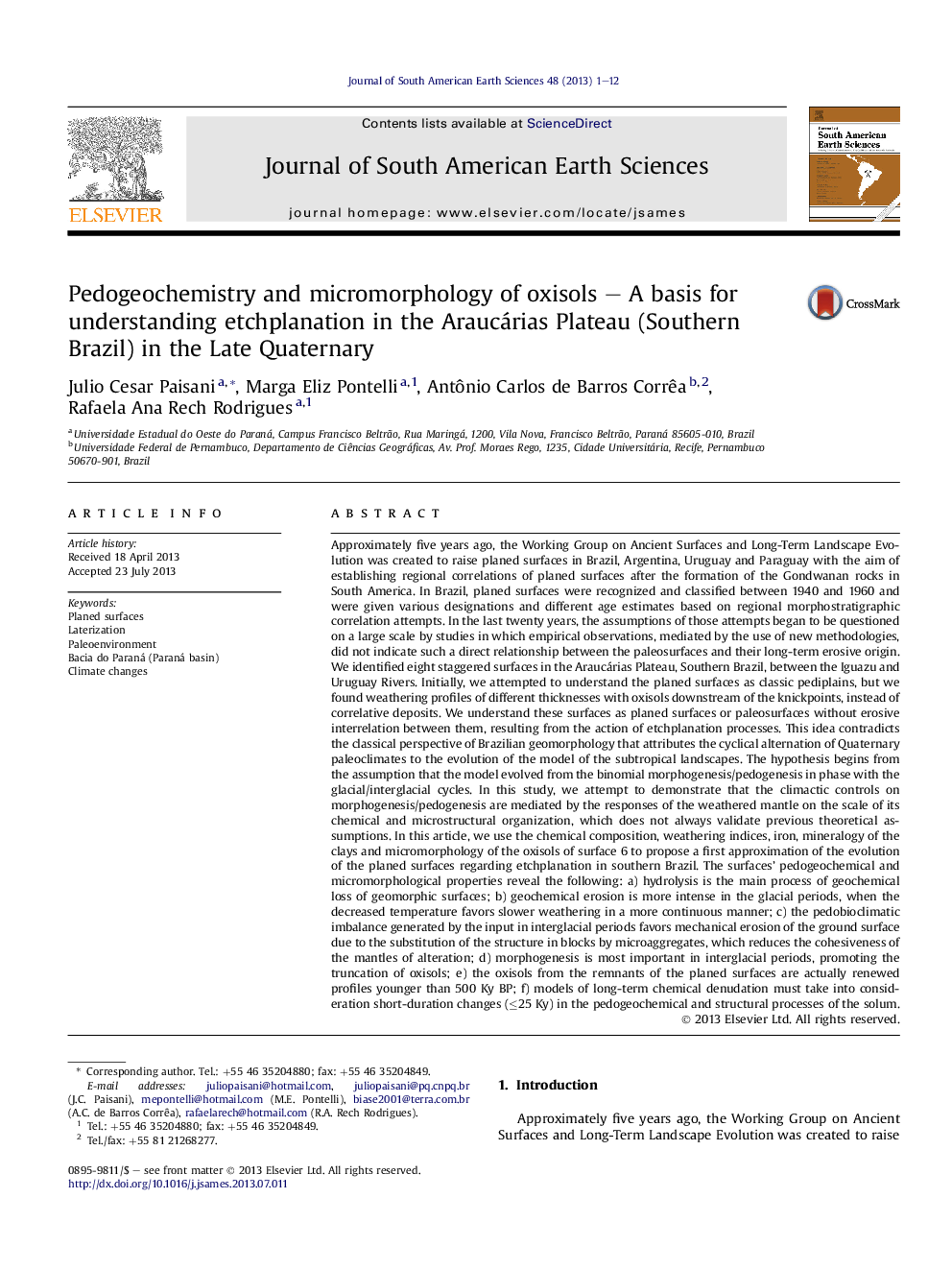| Article ID | Journal | Published Year | Pages | File Type |
|---|---|---|---|---|
| 4682367 | Journal of South American Earth Sciences | 2013 | 12 Pages |
•Geochemical erosion is more intense in glacial periods.•Mechanical erosion is more important in interglacial periods.•Mechanical erosion occurs via the substitution of the structure in blocks by microaggregates.
Approximately five years ago, the Working Group on Ancient Surfaces and Long-Term Landscape Evolution was created to raise planed surfaces in Brazil, Argentina, Uruguay and Paraguay with the aim of establishing regional correlations of planed surfaces after the formation of the Gondwanan rocks in South America. In Brazil, planed surfaces were recognized and classified between 1940 and 1960 and were given various designations and different age estimates based on regional morphostratigraphic correlation attempts. In the last twenty years, the assumptions of those attempts began to be questioned on a large scale by studies in which empirical observations, mediated by the use of new methodologies, did not indicate such a direct relationship between the paleosurfaces and their long-term erosive origin. We identified eight staggered surfaces in the Araucárias Plateau, Southern Brazil, between the Iguazu and Uruguay Rivers. Initially, we attempted to understand the planed surfaces as classic pediplains, but we found weathering profiles of different thicknesses with oxisols downstream of the knickpoints, instead of correlative deposits. We understand these surfaces as planed surfaces or paleosurfaces without erosive interrelation between them, resulting from the action of etchplanation processes. This idea contradicts the classical perspective of Brazilian geomorphology that attributes the cyclical alternation of Quaternary paleoclimates to the evolution of the model of the subtropical landscapes. The hypothesis begins from the assumption that the model evolved from the binomial morphogenesis/pedogenesis in phase with the glacial/interglacial cycles. In this study, we attempt to demonstrate that the climactic controls on morphogenesis/pedogenesis are mediated by the responses of the weathered mantle on the scale of its chemical and microstructural organization, which does not always validate previous theoretical assumptions. In this article, we use the chemical composition, weathering indices, iron, mineralogy of the clays and micromorphology of the oxisols of surface 6 to propose a first approximation of the evolution of the planed surfaces regarding etchplanation in southern Brazil. The surfaces' pedogeochemical and micromorphological properties reveal the following: a) hydrolysis is the main process of geochemical loss of geomorphic surfaces; b) geochemical erosion is more intense in the glacial periods, when the decreased temperature favors slower weathering in a more continuous manner; c) the pedobioclimatic imbalance generated by the input in interglacial periods favors mechanical erosion of the ground surface due to the substitution of the structure in blocks by microaggregates, which reduces the cohesiveness of the mantles of alteration; d) morphogenesis is most important in interglacial periods, promoting the truncation of oxisols; e) the oxisols from the remnants of the planed surfaces are actually renewed profiles younger than 500 Ky BP; f) models of long-term chemical denudation must take into consideration short-duration changes (≤25 Ky) in the pedogeochemical and structural processes of the solum.
